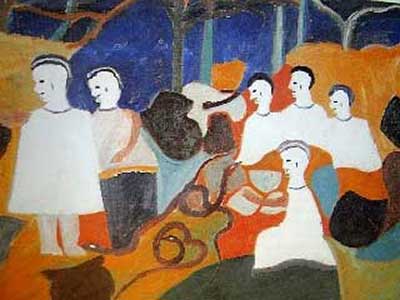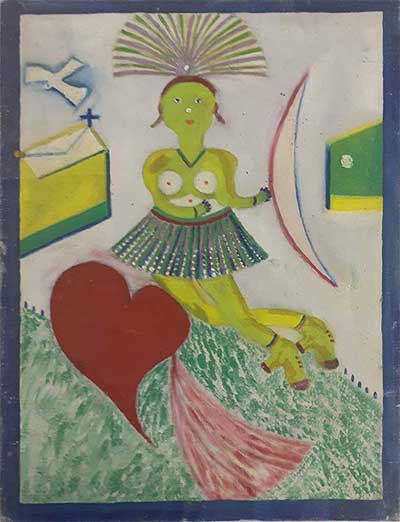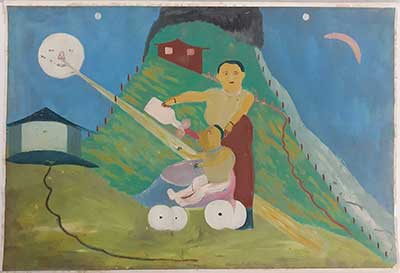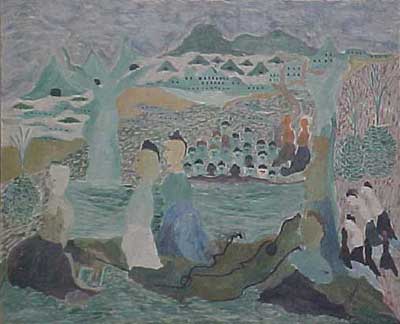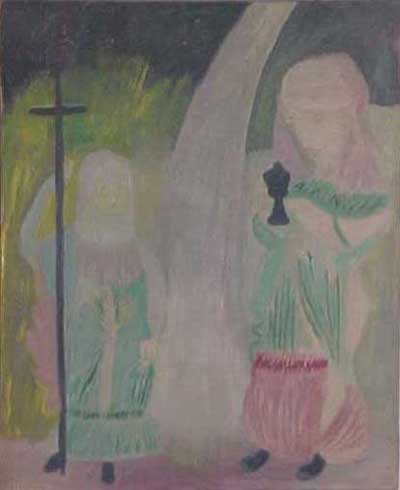Carlos Pertuis (1910-1977), being a man with a sensitive and religious nature, the artist quit school after his father's death and started working at a shoe shop.
One morning, rays of sunlight fell on a small mirror in his bedroom: the extraordinary reflection dazzled him and he had a cosmic vision of the “Planetarium of God”, in his own words. He screamed and called for his family so all of them could see that wondrous apparition he was seeing. On the same day he was committed to the Praia Vermelha Sanatorium. It was September 1939.
Carlos descended vertiginously into the sphere of archetypal images of gods and demons. He frequently depicted religious symbols and rituals. His painting encompasses a great thematic variety; with great originality he portrayed mysteries at once strange, imposing, and disquieting. He worked intensely and produced about 21500 works – drawings, paintings, sculptures, woodcuts, and writings.
Mário Pedrosa (1900-1981), writer and critic art, on Carlos Pertuis:
Carlos’ arrival to daily life at Engenho de Dentro was different from that of the other residents (…). He came loaded with messages and ideas, with pockets filled with scribbled papers. The mystical vision that had maddened him still whirled through his head, as was the case with illustrious predecessors, such as the shoemaker Jacob Böhme four hundred years earlier. Bohme is famous today in the history of ideas, not for mending shoes, but for being a naturalist philosopher, a precursor of the religious renewal movement that spawned the Reformation.
Carlos Pertuis didn't have such an illustrious background, as far as we know, but his spiritual path runs parallel, even if more modestly, to those who stood out in life and history for their good deeds, their mystical and prophetic arrangements, and their exceptional artistic creativity”.
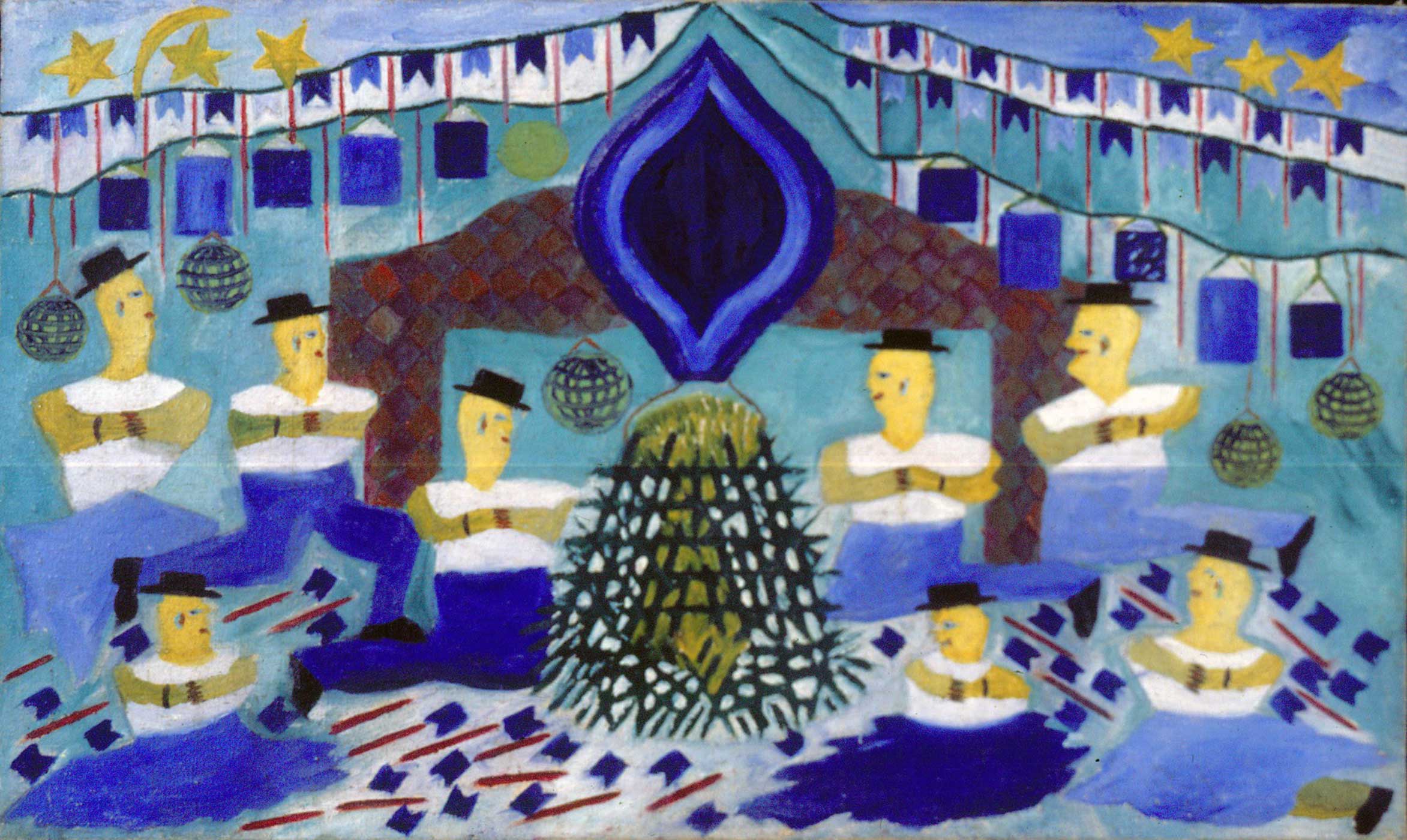
On the painting of the Vulva-bonfire, by Nise da Silveira:
Fire rituals are among the oldest celebrated by man, along with ancient dances that united the sacred and the profane.
Such archaic rituals, over time, continued in the São João festivities in Brazil. The starting point for the painting were the June festivities in the hospital, captured in a decoration with little flags. Carlos' painting goes much further, reactivating archetypal images of the collective unconscious.
On each side of the bonfire, symmetrically placed, eight men kneel with their hands crossed, wearing the same clothes and bracelets, and seem to belong to the same brotherhood. All of them look at the bonfire at the center of the painting, above which a big balloon can be seen. Here the ancient fire ritual reappears, with its typical connections between fire and sexuality. The fire represents the masculine element and the balloon represents the female element.

